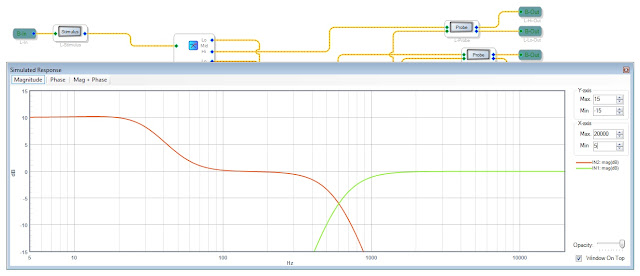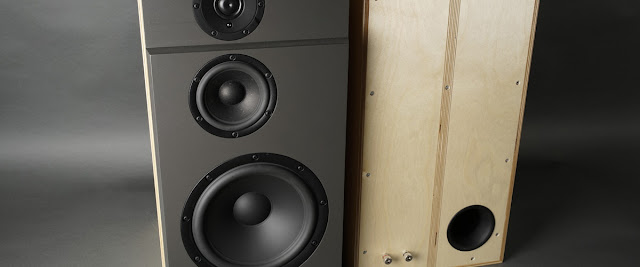The 3-Way Retro Part 5.
The DSP finally arrived after being stuck at some Ali Express logistics hub in central Europe. Nice build quality and the USBi programmer works great with the unsigned drivers. I am not planning to use the input board or the Bluetooth module for this build but the input board is useful while developing.
The "AuxADC EQ Filter" hierarchy board looks like this. Two filters driven by a pair of pots, tone controls right?
The "Master Volume" hierarchy board looks like this. Driven by the third pot and quite obvious what it does.
That's that about the 3e Audio pre-programmed project. You might find it useful but not for this build so I started out with a project using the same hardware setup but with an empty schematics. This is what I got so far in my main project. I am not using the Bluetooth board, only the two analog input channels. I start off with DC Blocking. There should be no DC from my preamp but better safe than sorry.
I am not planning to use the input board but there is a LED on the DSP board. It is by default driven from the password protected hierarchy boards "Auto Source Selection" and "Auto Mute". I don't know the logic but it is quite easy to guess that it is controlled trough MP2 (since it is the only one set as Output GPIO). So I made the hierarchy board "Clipping LED" because I wanted to use the LED as a clipping indicator instead of signal detection. This is what it looks like and it works great.
Next up is the hierarchy board "XO and EQ". I could have gone for the Automatic Speaker EQ ADI Algorithm but I want to use a step by step approach before I utilize some magic fairy dust. This is wery straight forward. A crossover filter and a Linkwitz Transform using IIR Coefficient.And this is what the filters looks like. A 4th order (24 dB/octave) Linkwitz-Riley @ 600 Hz followed by the LT.
This is how these filters simulate using the built in stimulus and probes. This will be my starting point and will be adjusted as soon as I can make some final measurements of the speakers. I am also planning to add a room correction filter and whatever is needed to manage delay and phase.
It is crazy how quick and easy it is to work with this DSP. It took me less than 10 minutes to make this project and to get the DSP programmed and tested. It is also great to be able to make changes in real time.



















